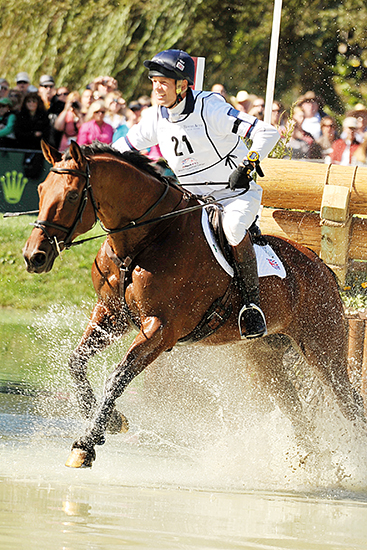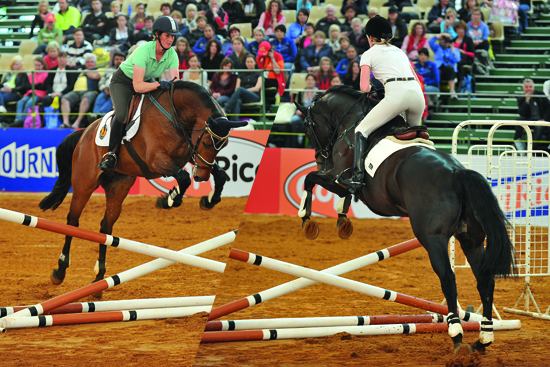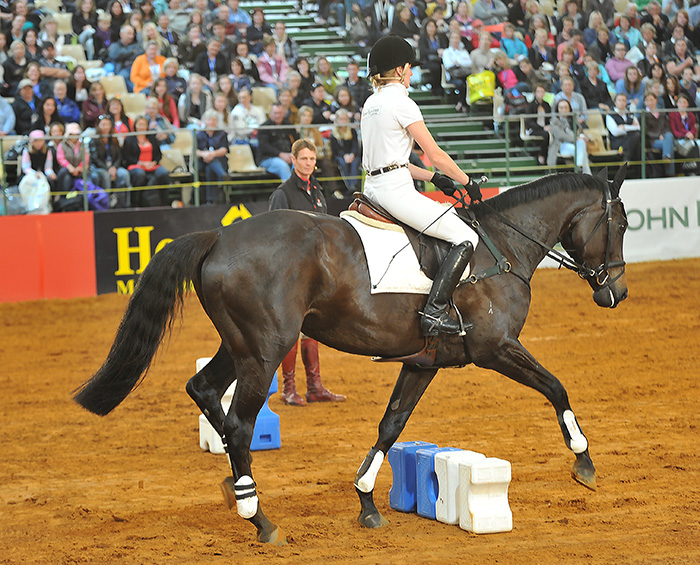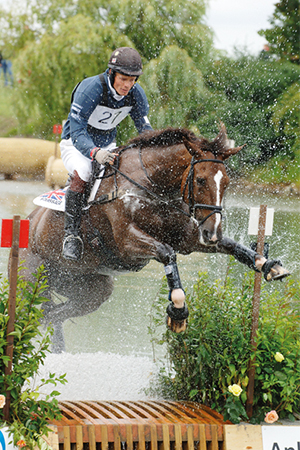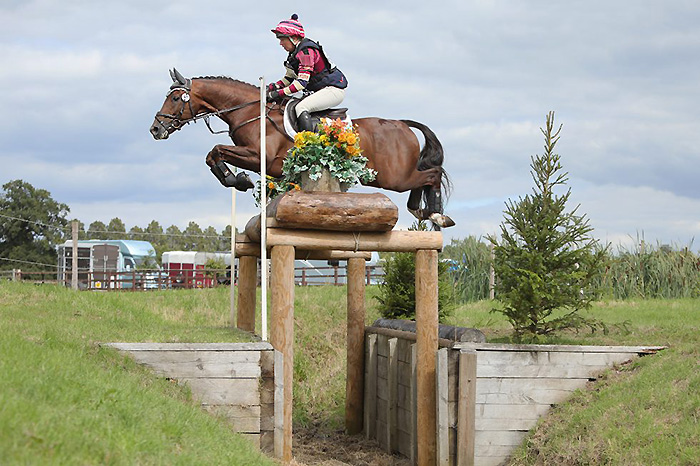William Fox-Pitt, multi-medal winner in the British eventing team, conducts a Master Class, great tips for everyone from a master trainer.
Although they were riding novice level horses, Catherine Davies on Jen Jan Zenith and Katja Weimann on BP Valentina – interestingly, Katja has had a win in Europe in 2021.
William used the two to demonstrate the work he does with young horses:
“My main principle when teaching, is you work on the rider and improve the rider, and the horse can only get better. Secondly, you should teach young horses to think for themselves. Right from the beginning, what we’re going to be getting the horses to think about, is where they’re putting their feet.”
“I chose these two combinations because one is a big, relaxed horse (Katja’s BP Valentina) and the other is a more athletic, small, hotter type (Catherine’s JenJan Zenith).”
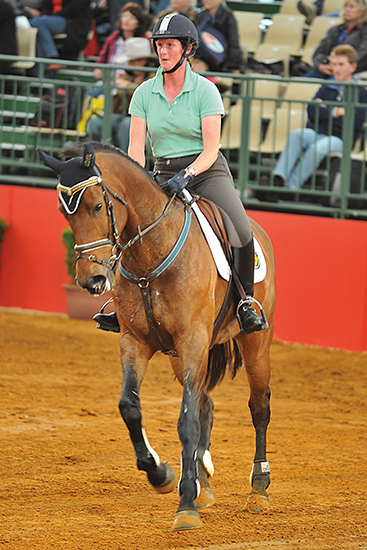 Catherine on JenJan Zenith
Catherine on JenJan Zenith
No matter the type of horse, the session begins in walk and William studies both riders’ positions: “Let them walk on and be brave in the walk, sit yourselves up nice and tall, relax your shoulders back. When I’m looking at the rider on the horse, I’m looking at a position that’s in balance, and secure. If I was to take the horse out from underneath the rider and stand them on the ground, they shouldn’t fall over. They should be in their own balance, they should not be relying on the horse to carry them, that’s not his job.”
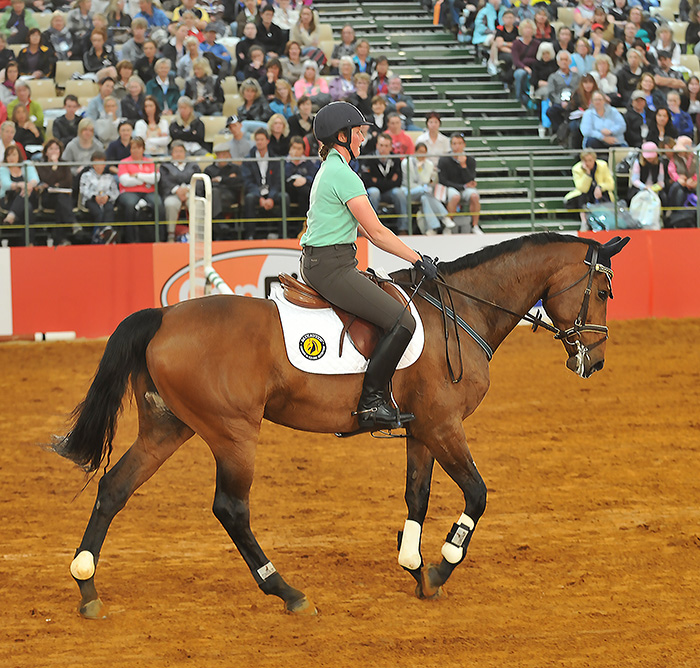
Creating a secure contact is the goal: “The horses should learn to go from the leg into the rein and accept your leg. The leg needs to be softly around the horse’s side to give him more confidence and to communicate. If your legs are not on the horse, then he’s very surprised when you suddenly give him an aid. If they’re into the rein nice and soft and confident, they are easier to adjust, no matter what the discipline.”
William describes what he wants to see when both combinations pick-up the trot work: “Think about having the horse in front of your leg, taking the rein forward. You can have your horses deeper, as long as that’s what you’re wanting. If you want him round to keep him more secure, that’s fine, but the rider must be aware that’s what they’re doing. The horse needs to know what you want from him, from the beginning.”
Flatwork for eventers starts out no differently – riding lots of transitions: “Within the trot vary the pace, move them on, bring them back, change the rein, make it more interesting.”
“One of the easiest things to do is focus too much on the inside rein, and therefore tend to either have the horse bent or falling through his shoulder. Just keep offering the inside rein and let the horse carry himself.”
“Both these horses have great trots, I think as far as eventing is concerned, they’re showing impressive movement. What their riders need to do is improve on that by instilling some confidence, until their horses hold themselves in balance.”
“Concentrate on having the horse nicely in the outside rein and only use the inside rein for support, when you need it. It’s easy to rely on the inside rein too much, they need to carry themselves, support themselves, and go on their own.”
Catherine and Jenjan Zenith (left), and Katja on BP Valentina
William looks to the canter: “You can see how easy a horse is on himself, how athletic he is, whether as an event horse he’s going to take all that work in the future and stay sound.”
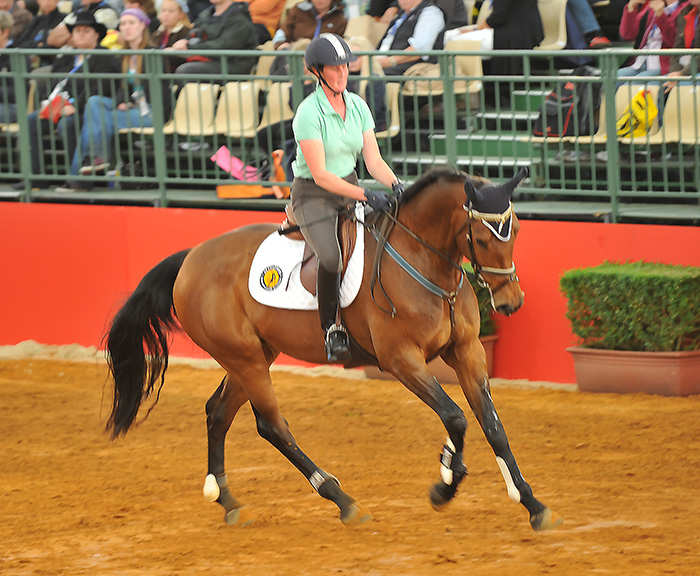
“Catherine’s horse (Jenjan Zenith) has a shorter canter and that’s got its benefits, and its weaknesses. As far as showjumping is concerned it’s a great thing, easy to shorten in front of fences. But as far as galloping is concerned, perhaps he’s a horse that’ll have to learn to lengthen and cover more ground. To do this you need to make changes within the canter, engage more, then move him along, do a bit of counter canter.”
“Katja’s horse (BP Valentina) on the other hand, has got a great, big, lopey canter. Great for galloping, difficult to shorten, so she’ll need to work on adjusting. Think of riding the horse up, but not holding her there, lower your outside rein. It’s really important for the eventing horse that he carries himself. As much as you can help him through the dressage and show jumping, you can’t hold them together cross country, they need to carry themselves.”
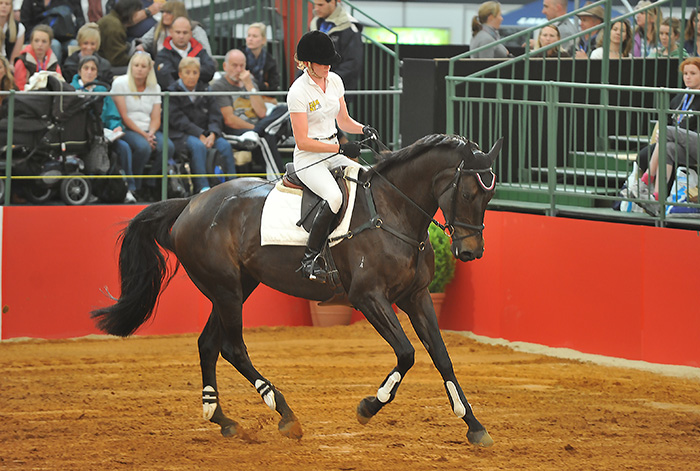
Think about riding the horse up, but not holding her there, lower your outside rein.
“Both these riders have got very nice positions, but you could both bring your shoulders back more and sit softly in the saddle. If you can’t be soft in your back, your horse won’t be soft in his back.”
The focus was on establishing the fundamentals, a secure contact and correct rhythm: “Sometimes what eventers do is take a horse that’s not going very well and start riding test movements. Then of course the movements don’t go well either.”
“I’m a big believer in getting everything right, and then moving on and really paying attention to details right from the word go. Sometimes we forget and just think, oh well I’ll crack on anyway and it’ll all come right in the end. That’s partly true, but I think in the eventing world we’re all guilty of not being fussy enough, early enough, and there’s a way of being fussy, and a way of being disciplined, without annoying your horse. You’ve got to reward them when they’re doing their best, and know when they need to have a break.”
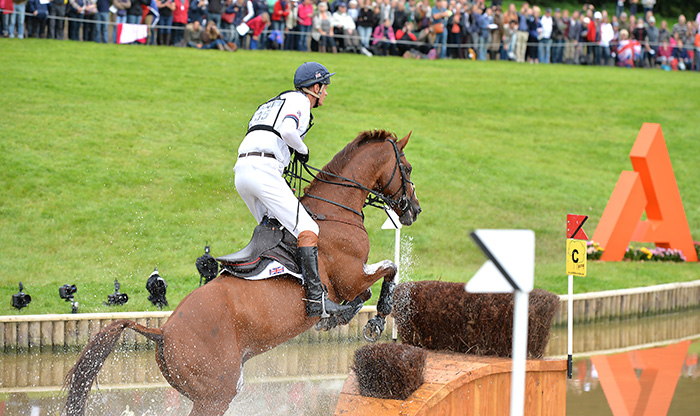
William and Chilli Mountain at the 2014 WEG
Then it was on to some jumping, William talked stirrup lengths: “I like to see quite a short stirrup. When I go from dressage to jumping, I know I’ve got long legs, but I would go up five or six holes and another three for cross country. That way you can be secure around the horse and yet allow him to jump underneath you.”
“Let’s come in trot over the cross rail, thinking about keeping them straight, I want them to look at the fence, I want them to decide when to take off. I don’t want you to tell them when they should jump. As they land keep them straight, maybe move them away from the fence a little, or if they’re quite exuberant just quieten them down and let them relax.”
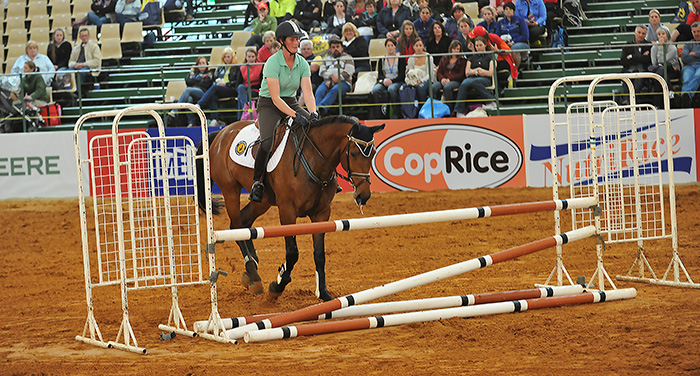
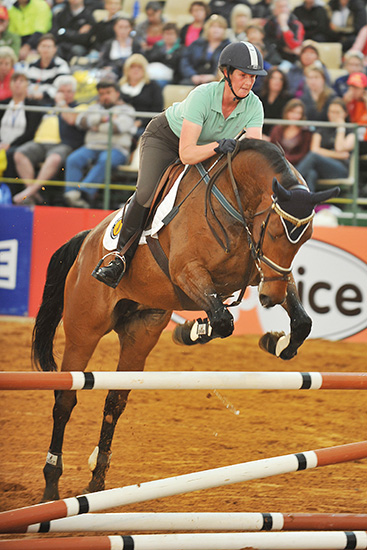
Catherine and Zenith had a refusal on their first attempt: “Don’t worry about that, just be more confident. You could expect her to go, or you can make sure she goes. Use more leg, get a reaction quicker, she was clearly spooking and you sort of let her go on spooking.”
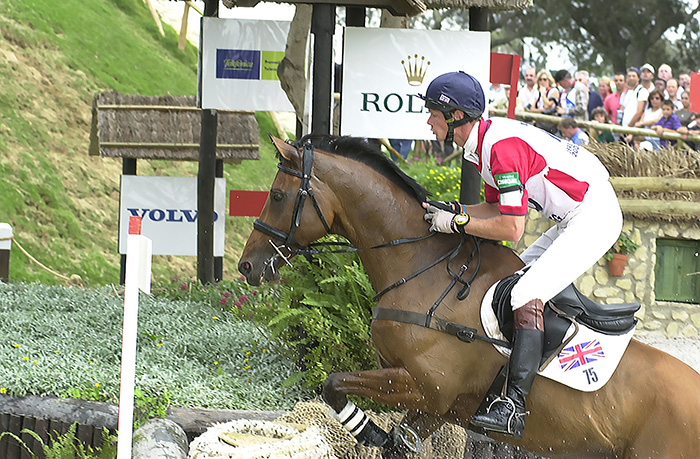
“I like the horse to come in and look at the fence. I like the horse to prick his ears and go to his fence in an eager way. I always find it quite unnerving if I’m riding a horse and you’re three strides out from quite a tricky combination and their ears are still back, thinking about what you’re saying, it’s a bit late for you to say something then. Just watch these horses’ ears and their eyes, they’re looking at what they’re doing, even though it’s a small fence.”
“We’ve got one horse (Zenith) that’s clearly more extravagant in the air, while the other mare (Valentina) has got a nice technique, but maybe not the same power. Which is what I was expecting, given how they are in canter, and their slightly different conformation.”
“I don’t use a lot of trot poles coming into fences, I think there’s certainly a use for trot poles, but for me, if you put a trot pole there, you’re telling the horse when to take off. You’re not actually asking him to make the decision when to take off himself.”
“I find a lot of riders, including myself, hate jumping in trot. There’s something about it that’s unnerving, it’s unpredictable. But especially for eventing, you need to be able to do this, so they’ve got more time to figure out where they’re going.”
“Make sure they jump straight, these small things are so important at this stage and when the jumps are low you can make these alterations. Don’t get your horse into a habit of jumping to one side. If the horse comes to the centre, he lands in the centre. If you want to be off centre that’s fine, but be straight. Horses often do like to jump to one side, just be very quick to correct and then quick to reward them when they’ve done it right.”
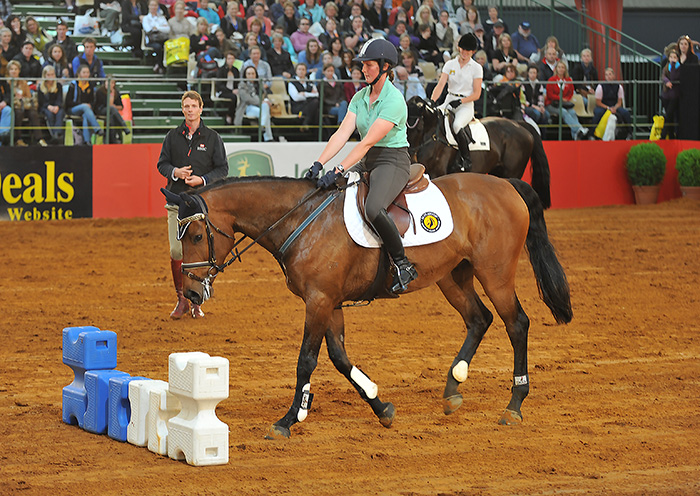
“For eventing, the horses don’t have to be amazing jumpers, they don’t have to jump very big. What they have to do is learn to jump fences clear. If I go and try out an event horse, I’d rather see him jump 1.15 metres ten times without touching it, rather than knocking down 1.15 metres twice and then clearing 1.50 metres amazingly.”
“Sometimes we get carried away by amazing jumpers, but you can’t use height to make them careful. They’ve got to be careful themselves, they’ve got to learn. These horses aren’t quite sure what they’re doing, they’re not quite sure where their feet are.”
“Walking to the jump slows everything down and it’s not always going to be pretty when you’re jumping slowly. Sometimes it’s ugly and sometimes eventing can be ugly, so it’s quite good to get in that position, get the horses learning how to get out of trouble.”
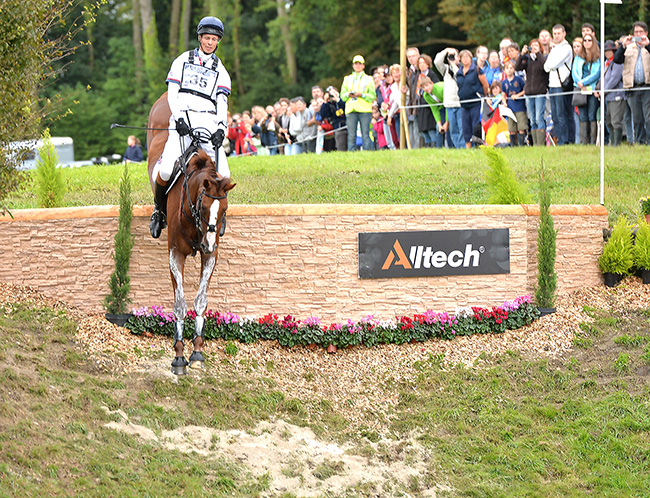
It’s really good for the riders as well, to make them wait and keep their balance behind the horse.
“When you’re jumping narrow fences they’ve got to learn to jump what’s in front of them, they’ve got to learn to not look for a way around. Come in nice and slow, but positive when you get there, because they’re going to think there’s no reason to jump that, but when it’s slow you can correct them. It’s really good for the riders as well, to make them wait and keep their balance behind the horse. When you’re teaching a young horse, and there’s nothing to say a four or five-year-old can’t learn to do this, he’s got to learn to lock onto the jump that’s in front of them.”
“Let the horse do the jumping, let the horse make their own mistakes, this is how they learn.”
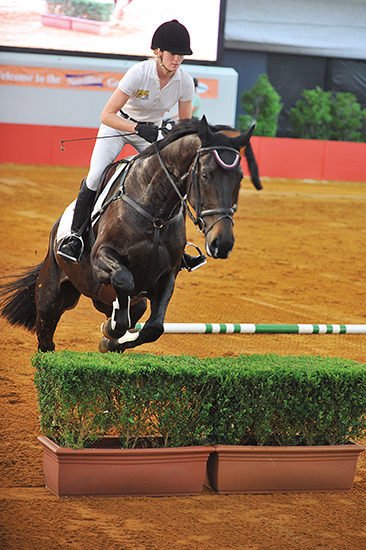
The lesson finished on a combination with William bringing straightness to Katja’s attention: “That was nice, but it’s a little bit to the right again. Cross bars are great for keeping them straight, keeping them central. Put your right leg on and open your left rein, much better. See, you can keep her straight. She’d like to go right but you’ve just got to be disciplined with yourself. She needs to work on a lot of gymnastics to learn to use herself.”
Teaching the horse to be brave is William’s priority: “That’s one of the most important rules when you’re training a young horse, that he learns to go. He’s allowed to have a look, but he’s got to go when you say go.”
“That’s the difference between eventing and show jumping. Show jumpers might accept for the horse to stop because they’re given a better option penalty wise than knocking it down. But with eventing that doesn’t apply, you can’t afford those 20 penalties for a refusal. First and foremost over the jump, secondly, clear the jump. That mare (Zenith) could now do with more insistence from the rider (Catherine), I think you’re giving her a nice ride, but I think she’s ready for a bit of a kick.”
Breeding an event horse this season in Australia? Go to www.ihb.com.au and find the right stallion for your mare – stallions like Britannia Royal
This article first appeared in the February 2011 issue of THM.




